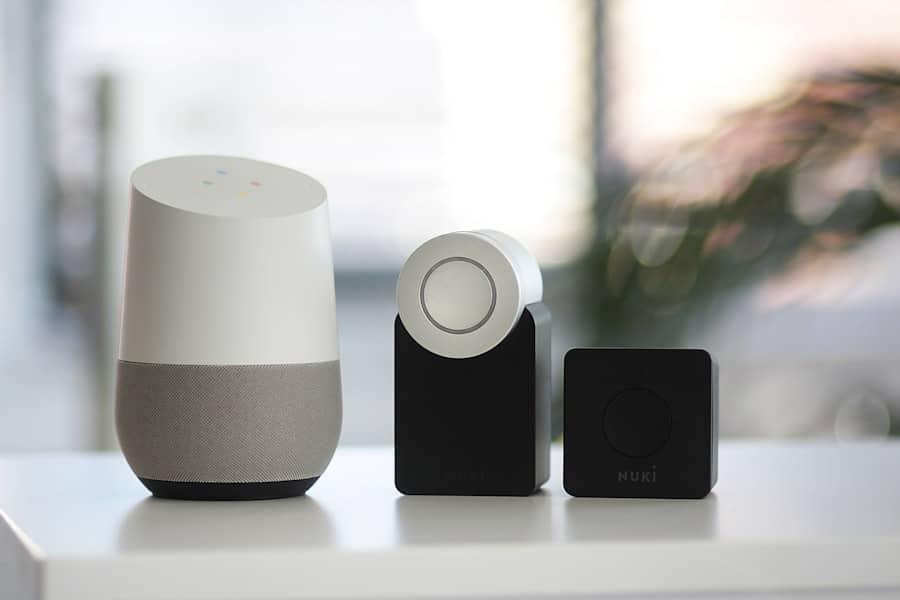Smart thermostats represent a significant advancement in home heating and cooling technology, offering homeowners enhanced control over their indoor climate. Unlike traditional thermostats, which require manual adjustments, smart thermostats utilize Wi-Fi connectivity and advanced algorithms to learn user preferences and optimize energy usage. These devices can be programmed to adjust temperatures based on the time of day, occupancy, and even weather forecasts, making them a valuable tool for energy efficiency and comfort.
The core functionality of a smart thermostat revolves around its ability to connect to the internet, allowing users to control their home’s heating and cooling systems remotely via smartphone apps. This connectivity not only provides convenience but also enables the thermostat to gather data over time, learning patterns in temperature preferences and occupancy. For instance, if a homeowner typically lowers the temperature at night, the thermostat can automatically adjust itself accordingly without requiring any manual input.
This learning capability can lead to significant energy savings, as the system can optimize heating and cooling schedules based on actual usage rather than fixed settings.
Key Takeaways
- Smart thermostats are devices that can be controlled remotely and can learn your heating and cooling preferences to optimize energy usage.
- When choosing a smart thermostat for your home, consider factors such as compatibility with your HVAC system, ease of use, and additional features like voice control and geofencing.
- Installing a smart thermostat typically involves turning off power to your HVAC system, removing the old thermostat, and connecting the new one following the manufacturer’s instructions.
- To maximize energy savings with your smart thermostat, program a schedule that aligns with your daily routine, enable energy-saving features, and monitor your energy usage through the thermostat’s app.
- Smart thermostat features like geofencing, learning algorithms, and remote access can help you save energy and improve comfort in your home.
Choosing the Right Smart Thermostat for Your Home
Compatibility with Your Existing System
Evaluating Features and Functionality
In addition to compatibility, potential buyers should evaluate the features offered by different models.
Features such as energy usage reports, integration with smart home ecosystems (like Amazon Alexa or Google Assistant), and customizable scheduling options can also influence the decision-making process.
Making the Right Choice for Your Needs
Ultimately, the right choice will depend on individual preferences and how much control and automation one desires in managing their home’s climate.
Installing Your Smart Thermostat
The installation process for a smart thermostat can vary depending on the model and the existing wiring in your home. Generally, the installation involves removing the old thermostat, connecting the new device to the existing wiring, and mounting it securely on the wall. Most smart thermostats come with detailed installation instructions, and many manufacturers provide online videos or customer support to assist users through the process.
However, it is essential to turn off power to the HVAC system before beginning any installation to ensure safety. For those who are not comfortable with electrical work or who have complex HVAC systems, hiring a professional installer may be advisable. A qualified technician can ensure that the thermostat is installed correctly and functioning optimally.
Additionally, professional installation can help avoid potential issues related to incorrect wiring or compatibility problems that could arise during a DIY installation. Regardless of whether you choose to install it yourself or hire a professional, ensuring that the thermostat is properly set up is crucial for maximizing its efficiency and functionality.
Setting Up Your Smart Thermostat for Optimal Energy Savings
Once installed, setting up your smart thermostat for optimal energy savings involves configuring its settings to align with your daily routines and preferences. Most smart thermostats allow users to create schedules that dictate when heating or cooling should occur based on occupancy patterns. For example, if you typically leave for work at 8 AM and return at 6 PM, you can program the thermostat to lower the temperature during your absence and raise it shortly before you return home.
This approach minimizes energy consumption while maintaining comfort. In addition to scheduling, many smart thermostats offer features such as adaptive learning and energy-saving modes. Adaptive learning allows the thermostat to analyze your behavior over time and make automatic adjustments without requiring manual input.
Energy-saving modes can be activated during periods of extended absence or when you are sleeping, further reducing energy usage. By taking advantage of these features and regularly reviewing your settings based on seasonal changes or lifestyle shifts, you can significantly enhance your home’s energy efficiency.
Utilizing the Smart Features of Your Thermostat
The true power of a smart thermostat lies in its array of intelligent features designed to enhance user experience and energy management. One of the most beneficial features is remote access via smartphone apps, which allows homeowners to monitor and adjust their heating and cooling systems from virtually anywhere. This capability is particularly useful for those who travel frequently or have unpredictable schedules, as it provides peace of mind knowing that they can control their home environment at any time.
Another notable feature is integration with other smart home devices. Many smart thermostats can communicate with smart speakers, security systems, and even smart blinds or shades. For instance, if your thermostat is integrated with a smart home ecosystem, it can automatically adjust based on whether you are home or away, or even respond to changes in outdoor temperature by coordinating with window shades to block out heat from sunlight.
These interconnected systems not only enhance convenience but also contribute to overall energy savings by optimizing various aspects of home management.
Monitoring and Adjusting Your Thermostat Settings
Tracking Energy Consumption Patterns
Most smart thermostats provide detailed energy usage reports that allow homeowners to track their consumption patterns and identify areas where they can improve efficiency. By reviewing these reports regularly, you can gain insights into how different settings impact energy use and make informed decisions about adjustments.
Seasonal Adjustments for Optimal Performance
Adjusting your thermostat settings based on seasonal changes is another critical aspect of maintaining optimal performance. For example, during colder months, you may want to set a lower temperature during the night when you are bundled up in bed and raise it during the day when you are active around the house. Conversely, in warmer months, setting a higher temperature when you are away can lead to significant savings on cooling costs.
Maximizing Comfort and Energy Efficiency
By actively monitoring usage patterns and making necessary adjustments throughout the year, you can maximize both comfort and energy efficiency.
Troubleshooting Common Smart Thermostat Issues
Despite their advanced technology, smart thermostats can encounter issues that may hinder their performance.
If your thermostat becomes unresponsive or fails to communicate with your smartphone app, checking your Wi-Fi connection is a good first step.
Ensuring that your router is functioning properly and that the thermostat is within range can often resolve these issues. Another frequent concern involves incorrect temperature readings or unresponsive controls. If your thermostat displays an inaccurate temperature or does not respond to adjustments, it may be due to sensor malfunctions or improper calibration.
In such cases, consulting the user manual for troubleshooting steps or performing a factory reset may help restore functionality. If problems persist despite these efforts, reaching out to customer support for assistance or considering professional service may be necessary.
Additional Tips for Saving Energy with Your Smart Thermostat
Beyond basic programming and monitoring, there are several additional strategies homeowners can employ to maximize energy savings with their smart thermostats. One effective approach is utilizing weather data integration features available in many models. By accessing local weather forecasts, your thermostat can make proactive adjustments based on expected temperature changes outside, ensuring that your home remains comfortable without unnecessary energy expenditure.
Another practical tip involves leveraging zoned heating and cooling if your home has multiple HVAC systems or zones. By programming different settings for various areas of your home based on usage patterns—such as keeping bedrooms cooler at night while maintaining a comfortable temperature in living areas during the day—you can achieve greater efficiency overall. Additionally, regular maintenance of your HVAC system, including changing filters and scheduling professional inspections, will ensure that your heating and cooling systems operate at peak efficiency, further enhancing the benefits of your smart thermostat investment.
Incorporating these strategies into your routine will not only help reduce energy costs but also contribute positively to environmental sustainability by minimizing overall energy consumption in your household.
If you’re interested in smart technology for your home, you may also want to check out this article on Smartsender, a chatbot platform for seamless customer interactions. Just like setting up a smart thermostat can help you save energy, utilizing a chatbot platform can streamline communication with customers and improve overall efficiency. Both technologies offer convenience and potential cost savings in different areas of your life or business.
FAQs
What is a smart thermostat?
A smart thermostat is a device that can be controlled remotely via a smartphone or other internet-connected device. It can also learn your heating and cooling preferences and adjust the temperature of your home accordingly.
How do I set up a smart thermostat?
To set up a smart thermostat, you will need to follow the manufacturer’s instructions, which typically involve connecting it to your home’s Wi-Fi network and downloading the corresponding app to your smartphone. You may also need to input your heating and cooling preferences.
How can a smart thermostat save energy?
A smart thermostat can save energy by learning your heating and cooling habits and adjusting the temperature of your home accordingly. It can also be programmed to lower the temperature when you are away from home and raise it when you are returning.
What are the benefits of using a smart thermostat?
Some benefits of using a smart thermostat include energy savings, convenience of remote control, and the ability to monitor and adjust your home’s temperature from anywhere.
Are there any rebates or incentives for installing a smart thermostat?
Many utility companies offer rebates or incentives for installing a smart thermostat, as they can help reduce energy consumption. It’s worth checking with your local utility company to see if they offer any programs.



